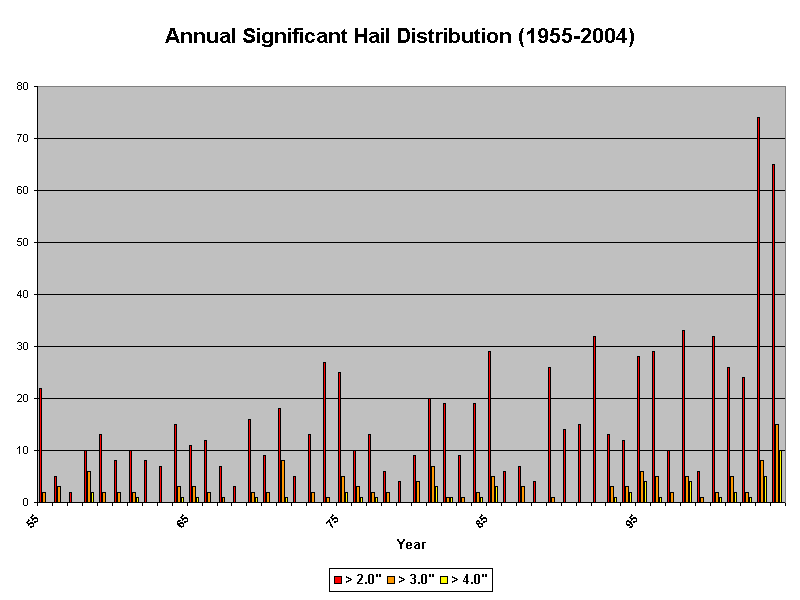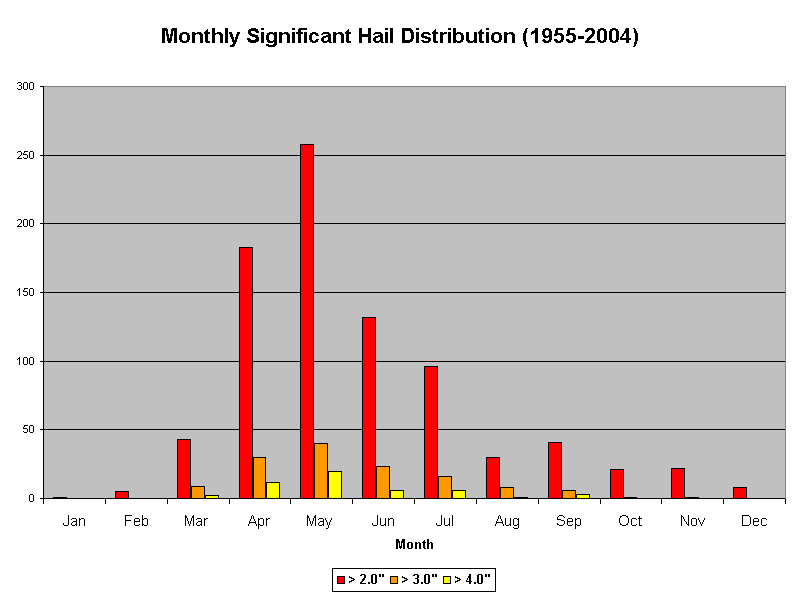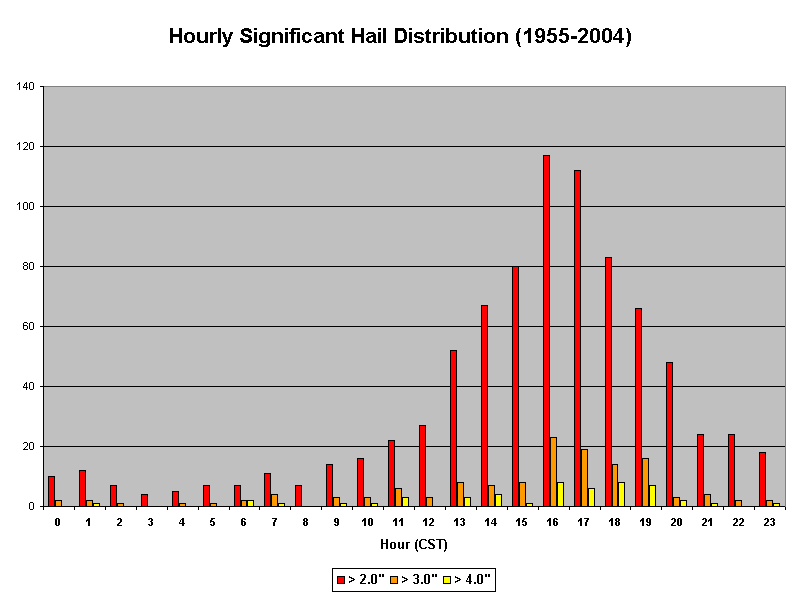A Brief Climatology of Significant Hail
in Missouri and Illinois
Mark F. Britt
WFO St. Louis, Missouri (LSX)
1. Introduction
This climatology examines the temporal and spatial distribution of significant hail (defined in the study as > 2" in diameter) in Missouri and Illinois. It is important for forecasters to understand the risk for any given weather hazard that they may encounter while on duty. A climatology can help a forecaster understand when a given event is most likely; and to quickly realize the significance when a rare event occurs (e.g. baseball size (2.75") occurs in January).
2. Data Sources and Methodology
Significant hail reports were obtained online from the NCDC Severe Local Storm Events Database (www.ncdc.noaa.gov). Only hail 2 inches and larger was included for two reasons. First, hail of this size poses a higher risk to life and property than hail of lesser size. Second, reports of significant hail are more reliable and result in more accurate climatologies than marginal severe hail events. Spotters tend to more accurately estimate significant hail size, and very large hail is more likely to be reported than marginally severe hail. For completeness, this study also lists data for hail >3.0" and >4.0". There have been 5 reports of hail >5.0" in Missouri and Illinois since 1955.
3. Results and Discussion

Fig. 1: Significant Hail Reports by Year
The number of significant hail reports rose steadily over the years, doubling from around 10 a year in the 1960s, to nearly 20 per year in the 1990s. The last two years of the study doubled any previous year, with 74 reports in 2003 and 65 in 2004. While 2003 had the most significant hail reports, 2004 had the most >3.0" reports (15 events) and >4.0" reports (10 events).
The largest hailstone recorded in Missouri fell near Meadville (Linn Co.) on May 24, 2004. It was 6 inches in diameter and 16.5 inches in circumference. The largest hailstone recorded in Illinois fell in Kankakee County on April 23, 1961. It was also 6 inches in diameter.

Fig. 2: Significant Hail Reports by Month
Not surprisingly, 73% (616 out of 840) significant hail reports occurred in the spring and early summer months (March through June). However, these events have occurred in each month of the year. >3.0" hail has not been reported in the "meteorological winter" (December-January) and >4.0" hail has only been reported between March and September.

Fig 3: Significant Hail Reports by Time (CST)
Significant hail has occurred at all hours of the day. As is typical of severe weather, most significant hail of all sizes occur during the afternoon and early evening hours.
Fig 4. Significant Hail Reports by County
While it may be tempting to conclude that significant hail is most likely to be reported in counties with the largest populations, this isn't necessarily the case. The top two counties (Clay, MO and St. Louis, MO) with the most significant hail reports are in metropolitan areas, but the several rural counties in Missouri had more reports than Cook county.